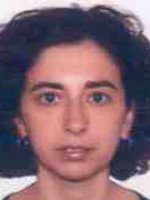resumo
The study of solid-fluid transitions in fluorinated ionic liquids using differential scanning calorimetry, rheology, and molecular modeling techniques is an essential step toward the understanding of their dynamics and the thermodynamics and the development of potential applications. Two fluorinated ionic liquids were studied: 1-hexyl- 3-methylimidazolium perfluorobutanesulfonate, HMIm(PFBu)SO3, and tetrabutylammonium perfluorobutanesulfonate, NB4(PFBu)SO3. The experimental calorimetric and rheological data were analyzed taking into account the possible mesoscale structure of the two fluorinated ionic liquids. The simulation results indicate the possible formation of three nanosegregated domains-polar, nonpolar, and fluorous-that may have a profound impact on ionic liquid research. In the case of HMIm (PFBu)SO3 the three types of mesoscopic domains can act as interchangeable jigsaw pieces enabling the formation of multiple types of crystals and inducing the observed calorimetry and rheological trends.
palavras-chave
MOLECULAR-FORCE FIELD; ANIONS; SEGREGATION; BROMIDE; SOLUTES; CATIONS
categoria
Chemistry
autores
Pereiro, AB; Pastoriza-Gallego, MJ; Shimizu, K; Marrucho, IM; Lopes, JNC; Pineiro, MM; Rebelo, LPN
nossos autores
Grupos
Projectos
Development of New Oxygen Therapeutics using Fluorinated Ionic Liquids (PTDC/EQU-FTT/118800/2010)
agradecimentos
Financial support for this project was provided by Fundacao para a Ciencia e Tecnologia (FCT) through project PTDC/EQU-FTT/118800/2010. A. B. Pereiro acknowledges Marie Curie Actions Intra-European Fellowships (IEF) for a contract under FP7-PEOPLE-2009-IEF-252355-HALOGENILS and for financial support of FCT/MCTES (Portugal) by way of a Post-Doctoral grant SFRH/BPD/84433/2012. K. Shimizu and I. M. Marrucho acknowledge FCT/MCTES (Portugal) for the Post-Doctoral grant SFRH/BPD/38339/2007 and a contract under Programa Ciencia 2007, respectively. M. M. Pineiro acknowledges the Xunta de Galicia (Spain) for Galician Network on Ionic Liquids, REGALIs (CN 2012/120). Furthermore, the authors acknowledge Carlos Gracia (TA Instruments) for his help in the interpretation of the DSC experimental data.


